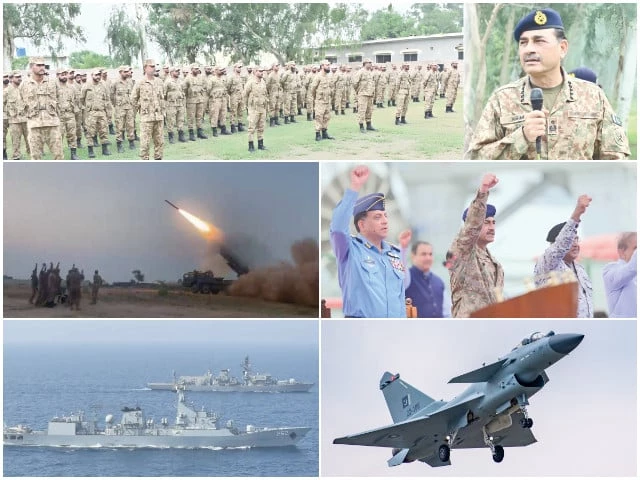Why an army chief as CDF fits Pakistan's strategic realities
Pakistan's unique geography and threat environment make appointment a logical choice

Pakistan's unique geography, threat environment, and military history make the appointment of an army chief as Chief of Defence Forces (CDF) a logical choice, analysts say, provided the arrangement preserves the autonomy and domain expertise of the air force and navy.
Military experts argue that Pakistan's strategic landscape is overwhelmingly continental and population-centric. "The decisive effects that shape policy are produced on land," said one analyst. A senior commander with deep land-warfare experience, empowered to integrate air and naval capabilities, can align ends, ways, and means across the joint force without diluting the roles of other services.
Classical military theory reinforces this approach. Former Russian general and military theorist Carl von Clausewitz stressed that war serves political purposes, and the decisive outcomes — control of territory, people, and government — are secured on land. Unity of command reduces friction, shortens decision cycles, and ensures campaigns are synchronised with policy objectives.
Similarly, a Swiss-French general and military theorist Antoine-Henri Jomini advocated concentration of force on decisive points and interior lines, favouring commanders who understand maneuver over terrain and logistics — core concerns in Pakistan's context.
From a strategic geography perspective, British geographer, academic and politician Halford Mackinder's continental theory highlights that states located along major land corridors must first secure borders, passes, and interior basins before projecting influence outward. Pakistan, positioned at the junction of South, Central, and West Asia, with long land frontiers, fits this continental model.
Modern strategists also note that while air and sea power enable and shape operations, land control remains the ultimate determinant in resolving political contests.
Pakistan's threat environment reinforces this model, according to defence experts. Border management, counterterrorism, urban security in the Indus corridor, gray-zone pressures along the Line of Control, and insurgencies manifest primarily on land. While campaigns are joint in nature — requiring intelligence, precision fires, air mobility, and maritime interdiction — the scheme of maneuver remains land-led.
Ground forces also carry the logistical and mobilisation burden, secure key infrastructure, and provide disaster relief. Defence experts say that a land-experienced CDF can synchronise these civil-military tasks with air force lift and navy sea-lift capabilities. Similarly, integrating ground-based, air-delivered, and emerging sea-based deterrence systems under a single commander ensures cohesive targeting and command-and-control.
An army chief as CDF ensures faster decision-making, coherent theater design, and better resource allocation. The likely theaters of operation in Pakistan are defined by land axes, rivers, and passes; theater commands anchored on ground formations but co-led by air and naval deputies allow joint effects while matching geography. A CDF fluent in interagency coordination further strengthens the civil-military interface during crises.
Legal and doctrinal safeguards protect the autonomy of the air force and navy. Service chiefs retain authority over recruitment, training, and service culture, while domain-specific responsibilities — such as integrated air and missile defense for the air force and sea control for the navy — remain under their leadership, with the CDF intervening only for joint priorities.
Defence experts emphasise that a land-focused CDF is a system integrator, not a service monopolist. "Air and sea power are decisive enablers; without them, land campaigns stall. A land-experienced CDF aligns all three domains to national strategy," said a defense analyst. Success is measured by joint outcomes — border security, safeguarding sea lines of communication, and maintaining air defense coverage — not army-only metrics.
In Pakistan's context, appointing an army chief as CDF aligns with geography, threat perception, and historical campaign experience. The model works best when accompanied by guarantees that the air force and navy retain operational control over their core missions, budgets, and capabilities. By anchoring joint operations on land while integrating air and maritime power, Pakistan can achieve the decisive political and military outcomes envisioned by classical strategic thought.





















COMMENTS (19)
Comments are moderated and generally will be posted if they are on-topic and not abusive.
For more information, please see our Comments FAQ